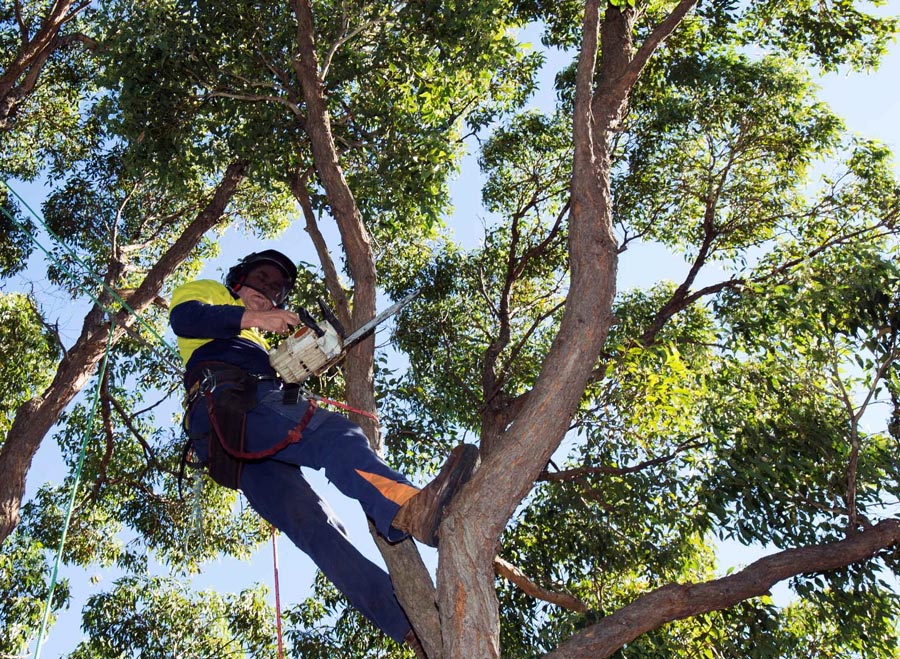Got a tree that’s getting a bit out of hand or starting to feel unsafe? Trees can add beauty to a property, but they can also be a problem when they’re dead, dying, or in awkward spots.
At Go Tree Quotes, we provide professional tree removal services and connect you with certified arborists across Australia.
It’s crucial to perform the job safely to avoid damage to property and ensure compliance with local statutes. We make sure all jobs are done professionally with minimal hassle.

The Go Tree Quotes Advantage: Why Choose Us
Here’s why Go Tree Quotes is the top pick for tree services across Australia:
- Over 10 Years of Industry Experience
- Free, No-Obligation Quotes
- Licensed and Insured Arborists
- Community-Centric Services
- Council Compliance Support
- Property Clean-Up Guarantee
- Cost-Effective, Quality Services
- Comprehensive Tree Care Services
With us, you’re choosing trusted professionals who put safety, quality, and customer satisfaction first—ensuring your trees are in the best hands.
Tree Removal and Other Services We Offer
At Go Tree Quotes, we make sure every tree service you need is covered by our trusted network of arborists. Here’s what we offer:
| Service | Description |
|---|---|
| Tree Removal | Safe removal of trees in risky or inconvenient spots, including handling council approvals. |
| Tree Pruning | Maintains tree health and appearance with methods that prevent damage and support growth. |
| Stump Grinding | Removes stumps completely, clearing space and eliminating yard clutter. |
| Palm Removal | Specialised removal of tricky palms, including those with spikes, managed safely by skilled arborists. |
| Tree Felling | Ensures safe and efficient felling of trees with safety measures, minimising risks and controlling costs. |
| Tree Lopping | Professional lopping services to protect property safety and value, avoiding DIY risks. |
| Tree Surgery | Comprehensive tree surgery, including pruning, removal, and stump grinding, performed by certified arborists. |
| Tree Trimming | Regular trimming services to maintain tree and hedge health and aesthetics, tailored to client needs. |
| Stump Removal | Complete stump removal to keep landscapes clean and pest-free, with professional and safe practices. |
Factors That Affect Tree Removal Costs
Costs for tree removals vary, so here’s what makes the biggest difference:
- Tree Size – The taller or thicker the tree, the more effort (and cost) it takes to remove.
- Tree Location – Trees close to buildings, fences, or power lines need extra care and time.
- Seasonal Demand – Prices can jump in peak seasons like summer when everyone’s booking tree jobs.
- Type of Service – Different services mean different equipment and time.
- Accessibility of Site – Trees with limited access or in tricky spots need extra gear and time.
- Council Permits or Compliance Requirements – Some removals need council permits, which can add to the cost.
We help you compare quotes to keep costs as low as possible, without missing out on quality.
Safety Standards and Compliance
We take safety seriously. Our arborists follow Australian safety standards for every job, from simple pruning to full tree removal.
All our partners carry full liability insurance, and we support you with council compliance to make sure every job goes smoothly and by the book.
Request 3 Free Quotes
Save time on tree removal quotes with our simple process. We verify providers for you.
- Fill in your details and postcode.
- Three trusted tree services get your request.
- They’ll reach out to schedule a quote visit. Review and select the quote that meets your needs.
No commitment required—just quality service at your fingertips.
FAQ's
Go Tree Quotes offers services for tree removal, tree care, pruning, stump grinding, and palm removal. Each job is handled by certified arborists who follow the best practices to keep things safe and efficient.
It’s easy! Just share a bit about your job, and we’ll connect you with three local arborists. You get to compare quotes with no obligation, helping you find the best fit.
Yes, every arborist in our network is fully licensed and insured. This way, you’re protected, and the job gets done according to Australian standards.
Some trees, especially larger or heritage ones, may need a council permit. We can guide you through what’s needed and help make the process smoother.
It depends on the size and location of the tree. Small trees can be handled in a couple of hours, but larger ones might take a bit longer due to size and access.
Key factors include the tree’s size, location, season, and accessibility. We’ll help you compare quotes to find the best value without sacrificing quality.
Yes, we connect you with arborists who handle emergency removals. This is handy after storms or when trees pose a sudden risk to property.
Absolutely. Every arborist in our network leaves the job site spotless, so you won’t be left with a mess after they’re done.
It’s rare, but there are situations where removal might be cheaper. Our team can give advice on discounts or options that might lower costs.
Go Tree Quotes provides a comparison of three local arborists to help you pick the best fit. All arborists are vetted and reviewed by other customers for quality assurance.












